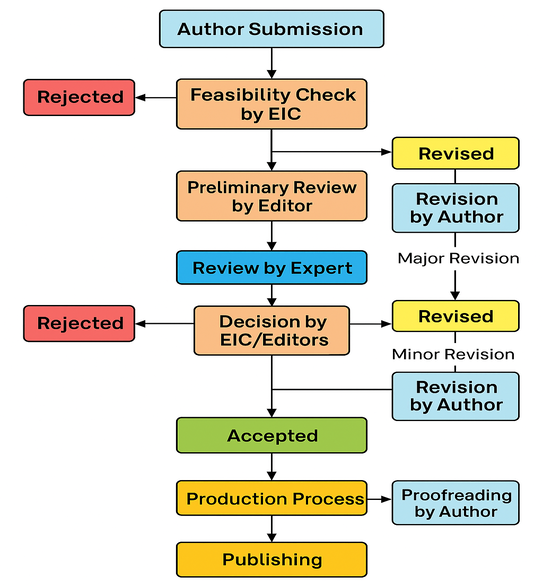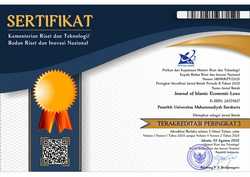Peer Review Process
At the Journal of Islamic Economic Laws, we uphold rigorous academic standards through a double-blind peer review process. This process ensures that both author and reviewer identities remain anonymous throughout the evaluation.

1. Initial Screening (Desk Evaluation):
All submitted manuscripts undergo an initial screening by the Editor-in-Chief (EIC) and the Editorial Board to assess their relevance, academic quality, similarity for plagiarism check, compliance with the journal’s scope and formatting requirements.
- The outcome of this desk evaluation is typically communicated to authors of submission.
- Manuscripts that do not meet the JISEL standard are rejected without external review.
2. Assignment of Handling Editor:
Manuscripts that pass the initial screening are assigned to a Handling Editor by the EIC. The Handling Editor is responsible for overseeing the entire review process, including reviewer selection, communication with authors, and final recommendation.
3. Peer Review:
The Handling Editor assigns the manuscript to at least two qualified peer reviewers with relevant expertise. Reviews are conducted under a double-blind policy. Reviewers are given sufficient time to complete their evaluations using a standardized review form provided by the journal.
4. Editorial Decision:
Based on the reviewers’ recommendations and their own assessment, the Handling Editor makes one of the following decisions:
- Accept Submission: The manuscript is accepted without the need for any further revisions.
- Revision Required: The manuscript is accepted with minor changes or revisions based on the reviewers' comments.
- Resubmit for Review: Significant changes are required in the manuscript, and a second round of reviews is necessary before a possible acceptance.
- Decline Submission: The submitted manuscript will not be published in the journal.
This decision is communicated to the author by the Handling Editor or through the OJS platform, along with anonymized reviewer comments.
5. Revision and Resubmission:
If revisions are required, the manuscript is returned to the author. Revised manuscripts must be submitted through the journal’s OJS, accompanied by a point-by-point response to the reviewers’ feedback.
6. Final Evaluation and Acceptance:
The revised manuscript is reviewed to ensure that all comments have been addressed. If necessary, it may be re-reviewed. The Handling Editor then makes a final recommendation, and the EIC issues the official acceptance letter.
7. Editorial Discretion:
While the Handling Editor manages the review process, the Editor-in-Chief retains final oversight and may intervene if needed, particularly in cases of dispute or appeal.

















